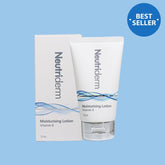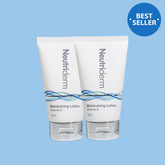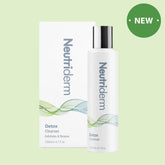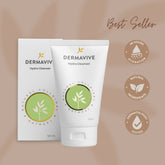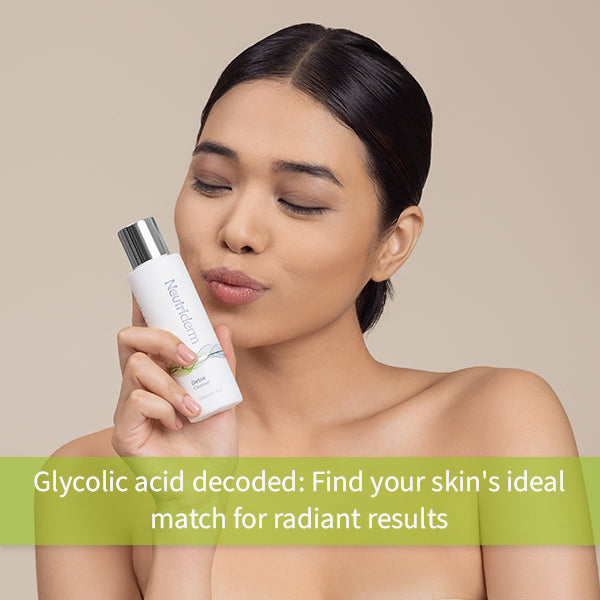Ever stood in front of your mirror, wondering why your skin still looks tired despite using half the products in your cabinet? Glowing, even-toned, and clear skin isn’t too much to ask for, yet it often feels like a never-ending chase, doesn’t it?
Some of us deal with constant breakouts, some struggle with dullness that just will not go away, while others feel their skin has lost that bounce or softness it once had. The skincare aisles are overflowing, yet it is hard to figure out what your skin really needs.
One ingredient that is often recommended for almost all these concerns is Glycolic Acid. But if you are thinking, “Wait, acid on my skin?”- Trust me, you are not the only one thinking this. It can sound a little intense, especially if you have never used it before. The fact is, glycolic acid can be a key player if used correctly and in the right concentration for your skin type.
But how do you know which glycolic acid product is right for you? That is what we are here to break down. Whether you are oily, dry, acne-prone, or just curious, this guide will help you understand how to pick the right formula that gives results without causing irritation.
What Exactly Is Glycolic Acid and Why Is It So Popular?
Glycolic acid is a type of alpha-hydroxy acid (AHA), usually derived from sugarcane. It is one of the smallest molecules among AHAs, which means it can penetrate deep into your skin to do its job effectively.
Glycolic Acid Benefits:
· Removes dead skin cells
· Brightens dull skin
· Unclogs pores and helps reduce acne
· Boosts collagen production
· Smoothens texture
· Fades hyperpigmentation and dark spots
· Prepares your skin to absorb other skincare products better
No wonder it is so popular! But not every product suits every skin type. The secret is in the concentration, formulation, and what other ingredients are paired with it.
Matching Glycolic Acid to Your Skin Type
Let’s break it down. Different skin types need different levels of care when it comes to glycolic acid.
1. Oily or Acne-Prone Skin
You might feel like your skin needs to be scrubbed clean every day but harsh products can strip too much, triggering more oil production. A glycolic acid cleanser or toner with 1–5% concentration is ideal. It helps unclog pores, reduce blackheads, and prevent future breakouts without triggering your skin.
Look for: Lightweight cleansers or gels that pair glycolic acid with calming ingredients.
2. Dry or Dehydrated Skin
Exfoliation sounds scary when your skin already feels dry, but mild glycolic acid can actually help. It removes flaky patches and allows your moisturizer to sink in better. Go for lower concentrations (around 2–4%) and avoid layering with other strong actives.
Look for: Creamy formulations that combine glycolic acid with humectants like glycerin or Sodium PCA.
3. Combination Skin
This is where things get tricky. You want something that balances both oiliness and dryness. A gentle glycolic-based cleanser used once a day (or a few times a week) is usually a good place to start.
Look for: A mild formula that is hydrating but still provides a bit of exfoliation.
4. Sensitive Skin
If your skin tends to flare up easily, glycolic acid might need to be introduced very slowly. Always start with the lowest possible concentration and do a patch test first. Use it once or twice a week.
Look for: Formulas that combine glycolic acid with calming ingredients like colloidal oatmeal, aloe, or vitamin E.
A Gentle Start: Neutriderm Detox Cleanser with Glycolic Acid

If you are new to glycolic acid or want a daily-use product that’s both effective and safe, the Neutriderm Detox Cleanser is a great place to begin. Unlike many exfoliating cleansers that feel too harsh, this one is gentle enough for regular use, mainly if you have normal to oily skin.
What makes it special?
It contains 2% glycolic acid, which is mild but still effective at lifting away dirt, oil, and dead skin. This means clearer pores, smoother texture, and a more radiant look over time.
Plus, it includes Sodium PCA, a natural moisturizing factor that helps keep your skin hydrated while you cleanse. The formula is crafted to tackle pollution damage, dullness, and even early signs of aging.
So, if your skin feels tired or rough by the end of the day, this city-proof cleanser can help reset it without making things worse.
How to Use Glycolic Acid Safely
Even though glycolic acid has amazing benefits, using it wrong can cause redness or irritation. Here is how to use it the smart way:
· Start slow: 2–3 times a week is enough if you are new to it.
· Use sunscreen – Glycolic acid can make your skin more sensitive to the sun. Never skip SPF during the day.
· Do not mix too many actives – Avoid layering glycolic acid with strong ingredients like retinol or salicylic acid in the same routine.
· Listen to your skin – If it stings, feels dry, or starts to peel, pull back and give your skin a break.
Still Unsure? Here is a Quick Guide
|
Skin Type |
Ideal % of Glycolic Acid |
Best Product Type |
Frequency |
|
Oily/Acne-Prone |
2–5% |
Gel/Cleanser |
Daily or alt. days |
|
Dry |
2–4% |
Creamy cleanser/lotion |
2–3 times/week |
|
Sensitive |
1–2% |
Mild cleanser |
Once or twice/week |
|
Combination |
2–4% |
Gel or gentle cleanser |
Few times/week |
Final Thoughts
Glycolic acid is one of the most versatile and powerful ingredients in skincare but only when used correctly. Picking the right product based on your skin type can make all the difference between glowing skin and a sensitized mess.
So do not fall into the trap of over-exfoliation or trendy TikTok routines. Instead, choose smart, balanced formulations like the Neutriderm Detox Cleanser if you are looking for a gentle yet effective way to introduce glycolic acid into your skincare.
Healthy skin is not just about what you use, it is also about how well it suits your skin. Choose wisely, start slow, and let glycolic acid work its magic!
